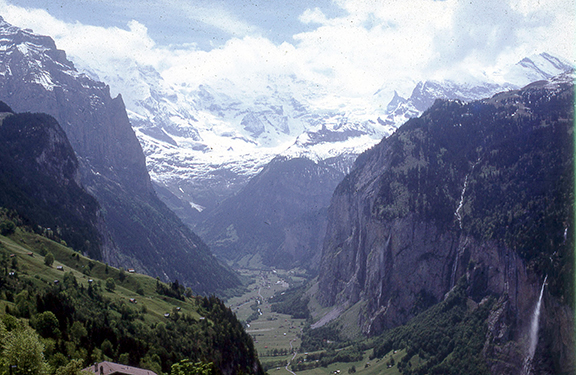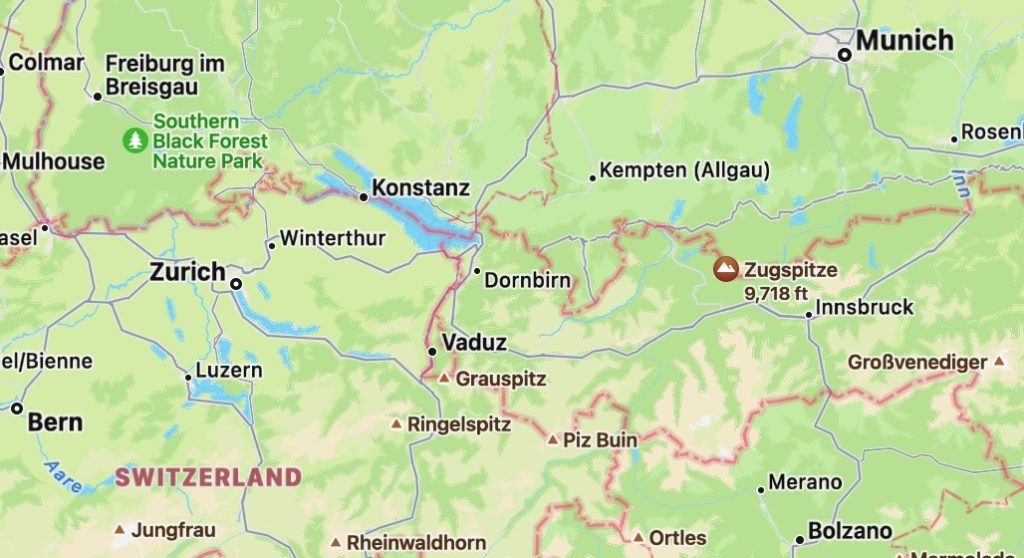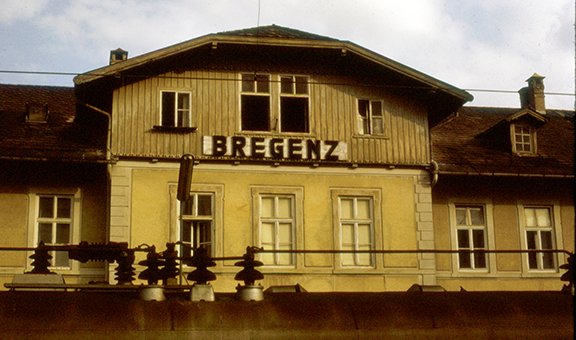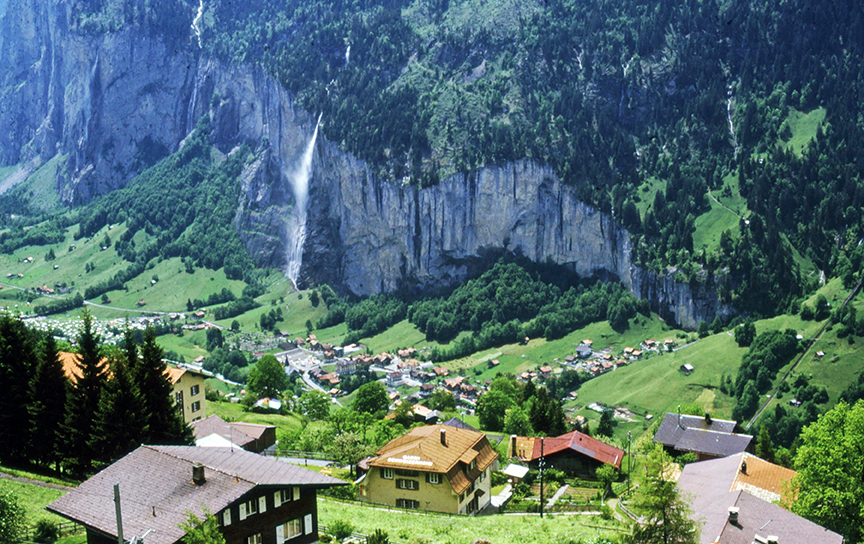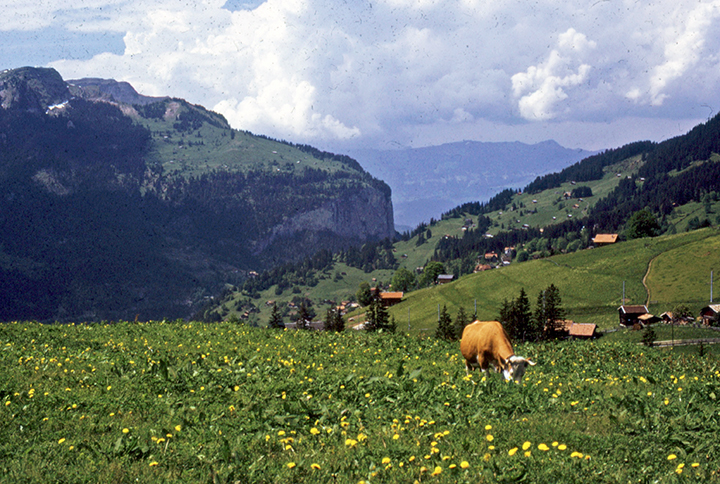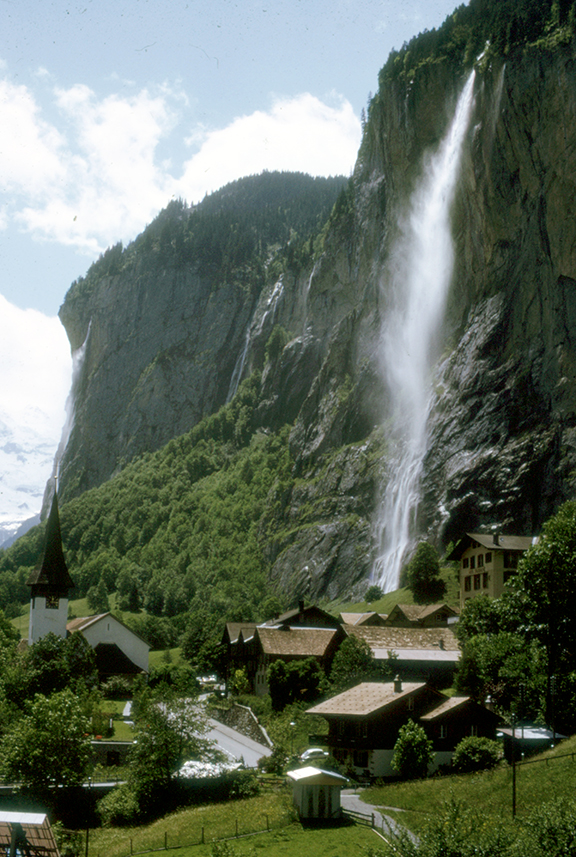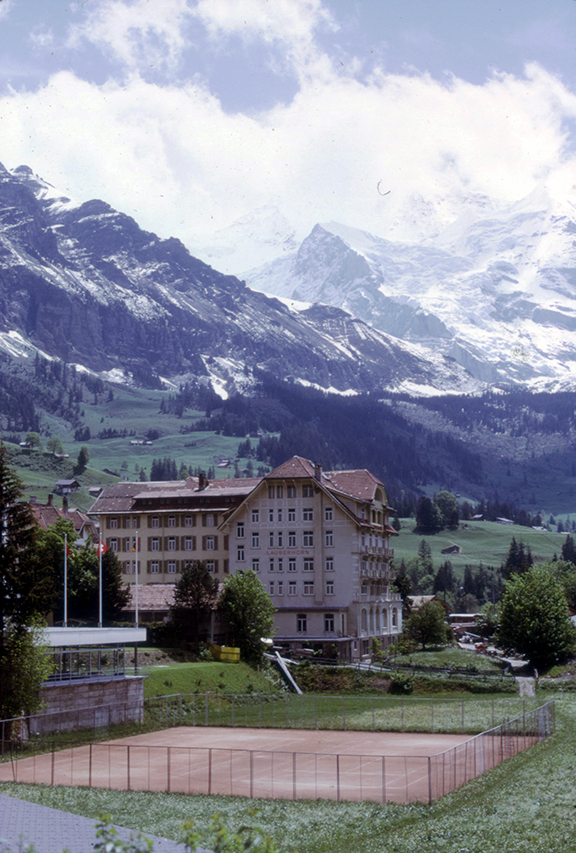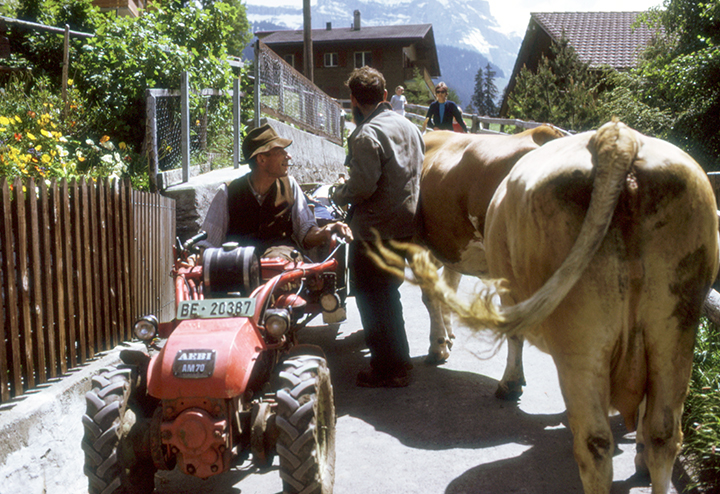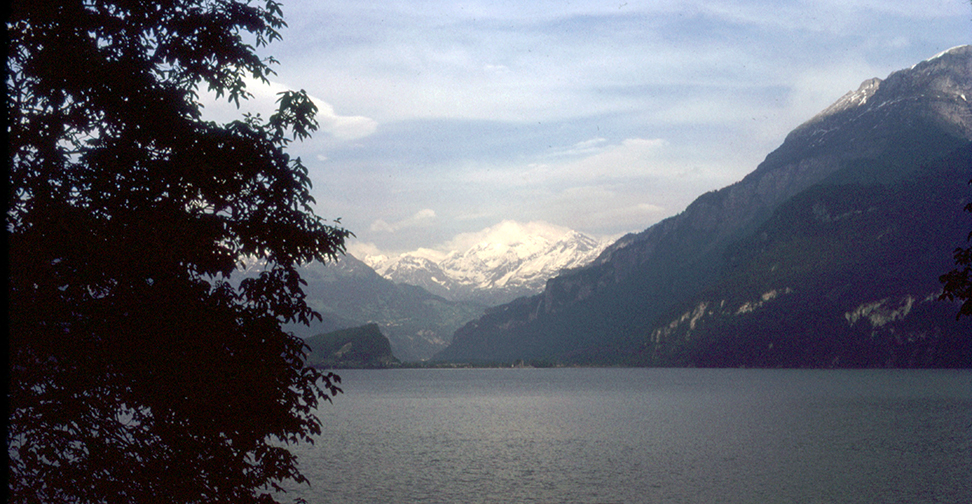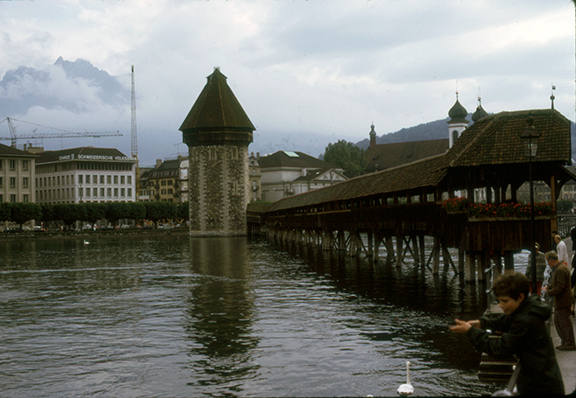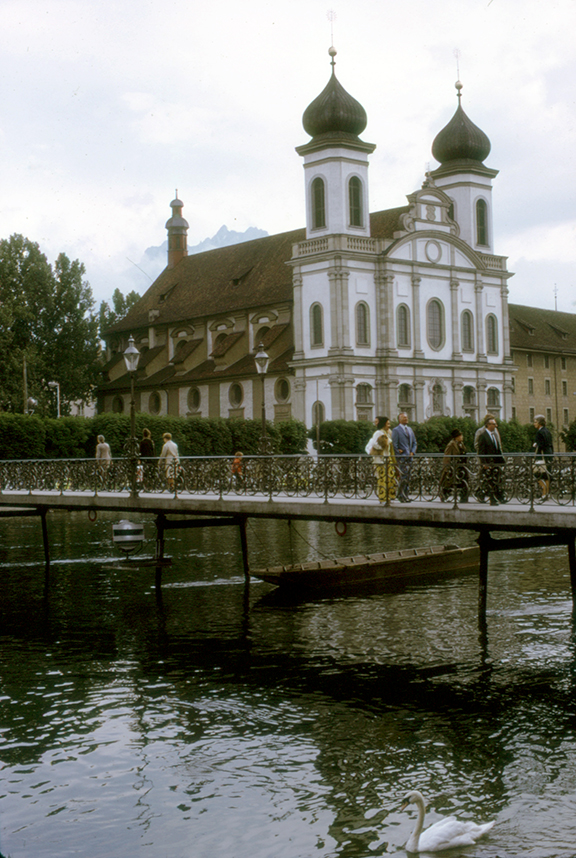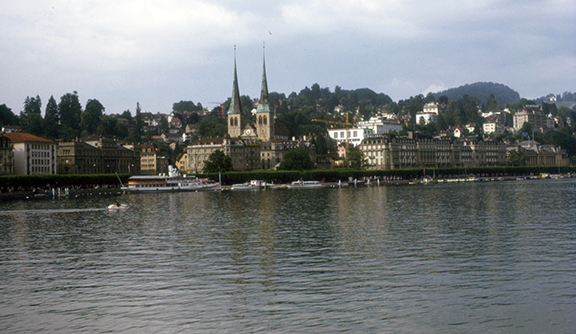I know Switzerland has cultural and historical elements of significance, but I’m quite sure the dominant memories Kevin and I have from our visit to the Lucerne area 50 years ago are of its physical grandeur. Especially Wengen, pictured above.
As Kevin recalls, we had first learned of Wengen from a Canadian waitress in Boston, who, overhearing our conversation about where we might go in Europe, told us of its beauty. And the Harvard Coop travel guide we used said of Wengen, “When they remake the movie Shangri-la, they will do it here.”
We had missed the train for which we had reservations (surprise!), and had left Munich in early afternoon on this date 50 years ago. We had the compartment to ourselves for a change, but it was a relatively short trip, about six-and-a-half hours.
In preparing this post, I noticed a slide of the photo above. Until I looked up the location Bregenz, I had not remembered that we had gone through Austria on the way. I assume we had passports checked, etc.
Arriving around 2100, we found a hotel. “Really nice, and $6 a night apiece.”
The next day was Wengen-centric. I remarked in my journal that our train to Interlaken definitely climbed, but that it compared in no way to the steep climb we had from Lauterbrunnen to Wengen. Kevin recalled that segment was by cog railway and was “a bit frightening.”
The initial impression of Wengen — the deep valley, with waterfalls spreading mist from hundreds of feet above, backed by the snow-capped 13,642-foot-high Jungfrau — is visually stunning. The weather was great — 80 degrees and sunny. My journal entry was “Wengen is indescribable (see slides).” Here is a gallery of said slides.
Kevin recalls “we were sitting on the hillside and a girl came along with a donkey pulling a cart full of flowers, and we said, ‘Holy sh*t — we’re in the middle of Heidi.'”
Wengen was then and is now car-free. Doesn’t mean you don’t have traffic jams, such as below.
I was curious how that massive rock Jungfrau got named “young girl.” Seems the term more commonly refers to a “maiden” or “virgin.”
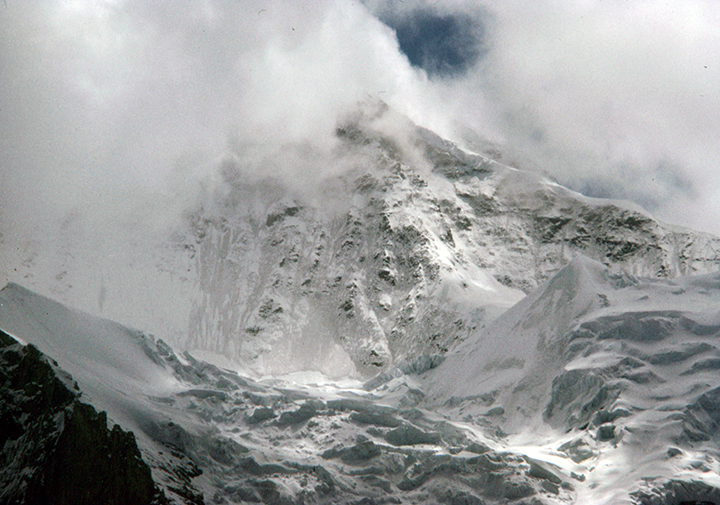
One of the main summits of the Bernese Alps, the Jungfrau was reportedly named in reference to nuns who lived in the nearby Interlaken monastery. Another peak in the area is named Mönch (“monk”).
We returned to Lucerne about 2000 and later ran into that group from Texas we had met earlier, in Copenhagen. Seems as if a lot of Americans were using the same travel guides.
Our last day in Lucerne we spent “doing business.” Dropped clothes off at a laundromat where an attendant did the wash. Went shopping for gifts and walked around. Here’s a gallery of scenes from Lucerne. The church with dual spires is the “Jesuit Church.”
Shortly after midnight, we caught the train south. Avanti!

